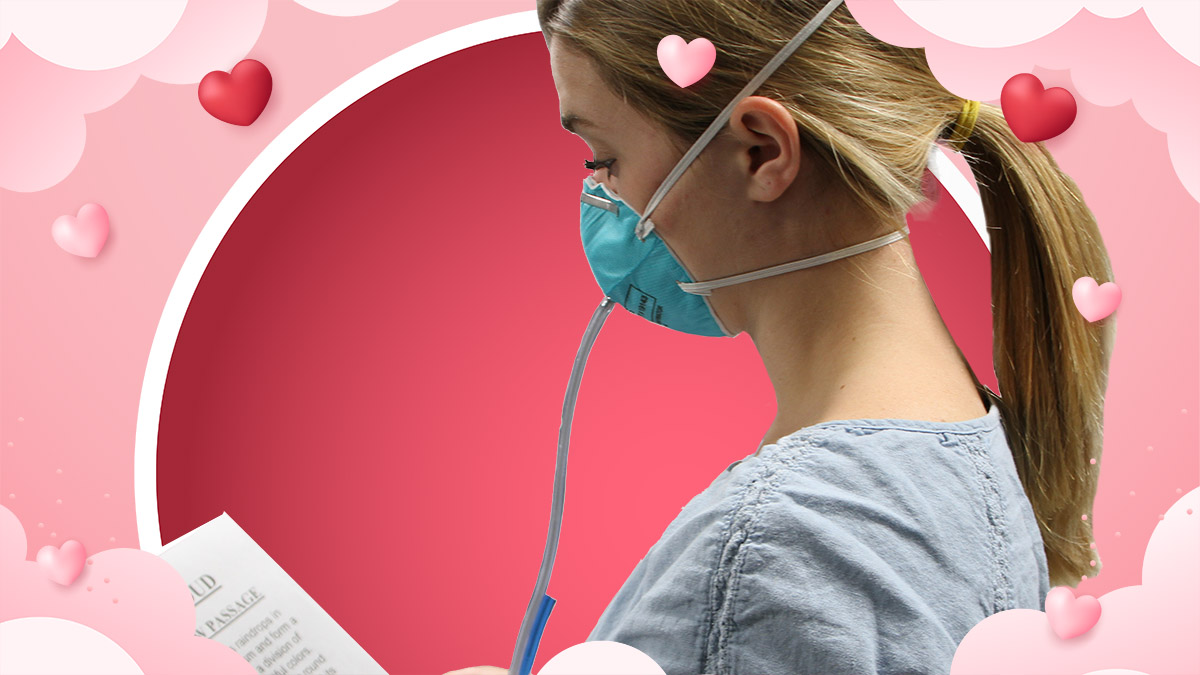Finding the Right Fit—Is Your Respirator “The One”?
Posted on by
Finding the right fit is one of the most important parts of a relationship. You don’t just grab any old fish from the sea that swims by and hope for the best. First, it’s necessary to test the waters and ensure you’re simpatico before settling on a partner. It’s Valentine’s Day, and yes, this advice could apply to your romantic life, but we also love to use today to show our love of respirators and we love to play matchmaker on your behalf as well. (That’s a lotta love, isn’t it?) This year we’re focusing on the importance of finding the right fit.
OSHA’s Fit Testing Requirement: Your Personal Matchmaker
When you’re thinking about the right fit for a relationship, it can get tricky. You might wonder how safe the process is, and how do you know who to trust? Thankfully, workers have the Occupational Safety and Health Administration (OSHA) to turn to. OSHA is the federal agency that requires employers to fit test workers who wear respirators on the job. Fit testing ensures that you and your respirator are the perfect match. Two different types of fit tests can be used to ensure you’re compatible: qualitative and quantitative.
A qualitative fit test relies on detecting a test agent through taste or smell. If you as the respirator wearer can’t taste or smell the test agent, the test is passed, and the respirator is a match! If you can smell the test agent (think of it as a smelly bad first date), then it wasn’t meant to be. When you “fail” a fit test with a respirator (don’t worry—it’s not your fault), it’s time for a date with a new make, model, style, or size until one is found that fits you properly.
Fit testing can also be conducted using an instrument that measures the fit of the respirator through seven different exercises. This is called a quantitative fit test. The exercises help determine whether the respirator will maintain a tight seal to the face when you are performing tasks.
As with dating, it may take multiple tries to find the right fit, so it’s important for the employer to provide a reasonable selection of sizes and models to choose from. If you feel like you’re running out of options, loose-fitting powered air-purifying respirators (PAPRs) might be a match. Unlike tight-fitting respirators, these respirators do not require a fit test. For this reason, they can also be a good fit for workers with facial hair who can’t shave due to medical reasons or a religious belief, observance, or practice.
In case these matchmaking methods seem hard to understand, we’ve put together a fact sheet that answers some of your most common questions about fit testing.
Why Fit Test Annually if You’ve Already Found “The One”?
Finding the right fit with a respirator may sound like a breeze compared to the dating world. However, you may wonder, if you have professionals sorting out the perfect match for you, why do you need to get fit tested every year? It seems time consuming, and it’d be nice to find your “happily ever after” based on your first best match. But people change, and we know that even happy, sustainable relationships require maintenance. The simple truth is, to remain healthy and safe at work, sometimes you need a new respirator. Case in point: A 2016 NIOSH study measured the facial dimensions and respirator fit of 195 people for three years. Over that period, researchers found significant changes in facial dimensions and that many respirators previously serving as a match no longer fit properly. This was especially true for study participants whose weight had fluctuated by at least 20 pounds. These findings support OSHA’s requirement for respirator users to get fit tested annually and whenever an employee experiences physical changes that could impact fit (dental alterations, an obvious change in body weight, etc.). Just as we change over time, our respirator relationships might need to change too, and passing an annual fit test becomes just as important as passing the first one.
Exploring Potential Relationship Barriers
We all experience potential relationship barriers— “meddlers,” if you will—even from well-meaning friends. In the case of respirators, these potential barriers can include surgical masks and other accessories that can come between you and your perfectly fitting respirator.
For good reason, NIOSH only approves complete respirator assemblies as part of 42 CFR part 84. A NIOSH approval applies only to the specific respirator assembly defined in the certificate of approval. Only the components listed in the certificate of approval can be used to maintain the respirator in a condition approved by NIOSH. If an accessory isn’t listed, using it will void the respirator’s approval and the protection the respirator provides may be compromised.
When barriers like these interfere with your respirator use at work, what was once your perfect match may no longer be a good fit. But remember the importance of finding the right fit is to ensure a healthy, safe, and ongoing relationship between you and your beloved respirator—something that all workers deserve.
Aris Copeland, BA, is a Health Communication Intern in the NIOSH National Personal Protective Technology Laboratory.
Meghan Kiederer, BA, is a Health Communication Specialist in the NIOSH National Personal Protective Technology Laboratory.
Joseph Schall, MA, is a Contractor in the NIOSH National Personal Protective Technology Laboratory and NIOSH Pittsburgh Mining Research Division.
CDR Megan Casey, RN, BSN, MPH, is a Nurse Epidemiologist in the NIOSH National Personal Protective Technology Laboratory.
Posted on by

